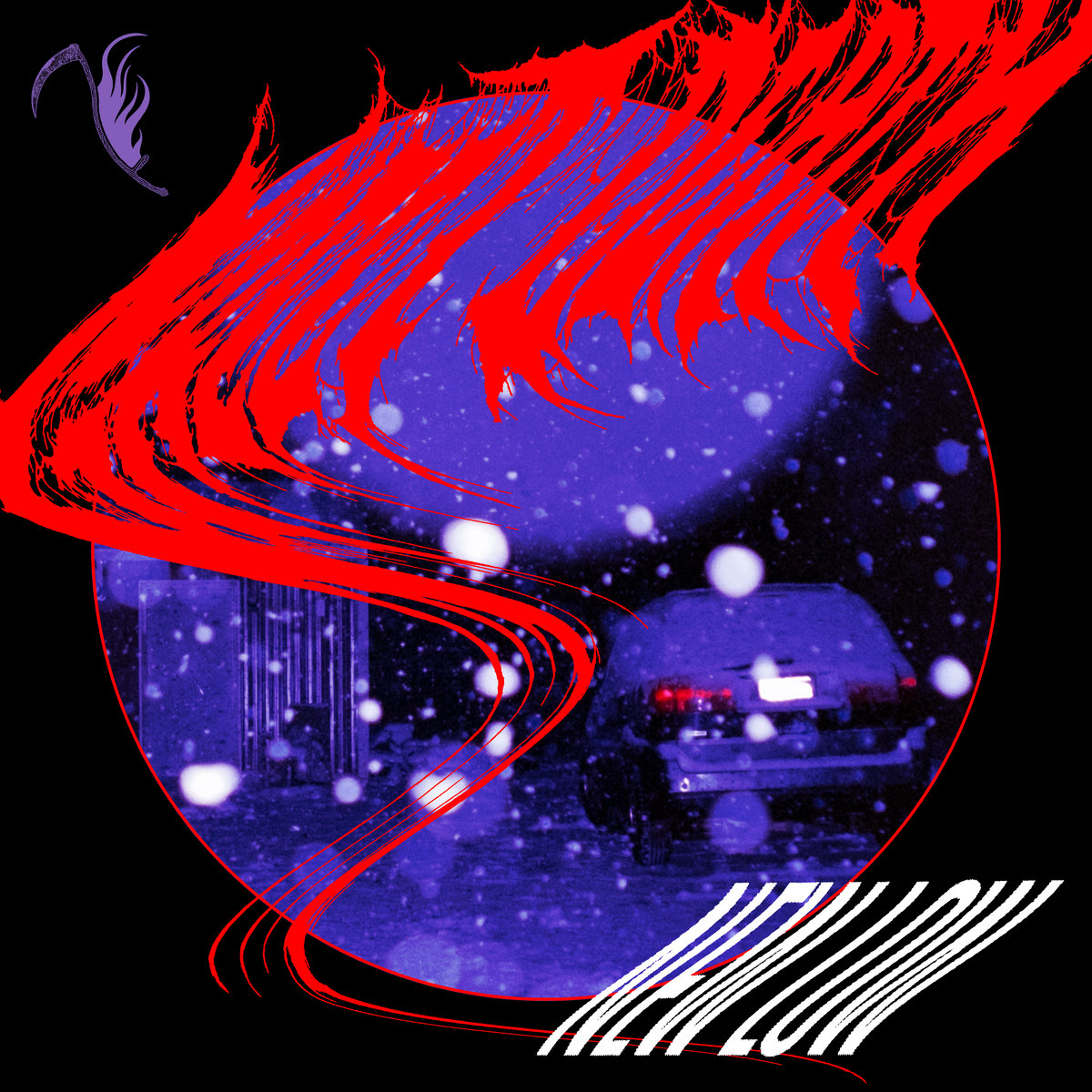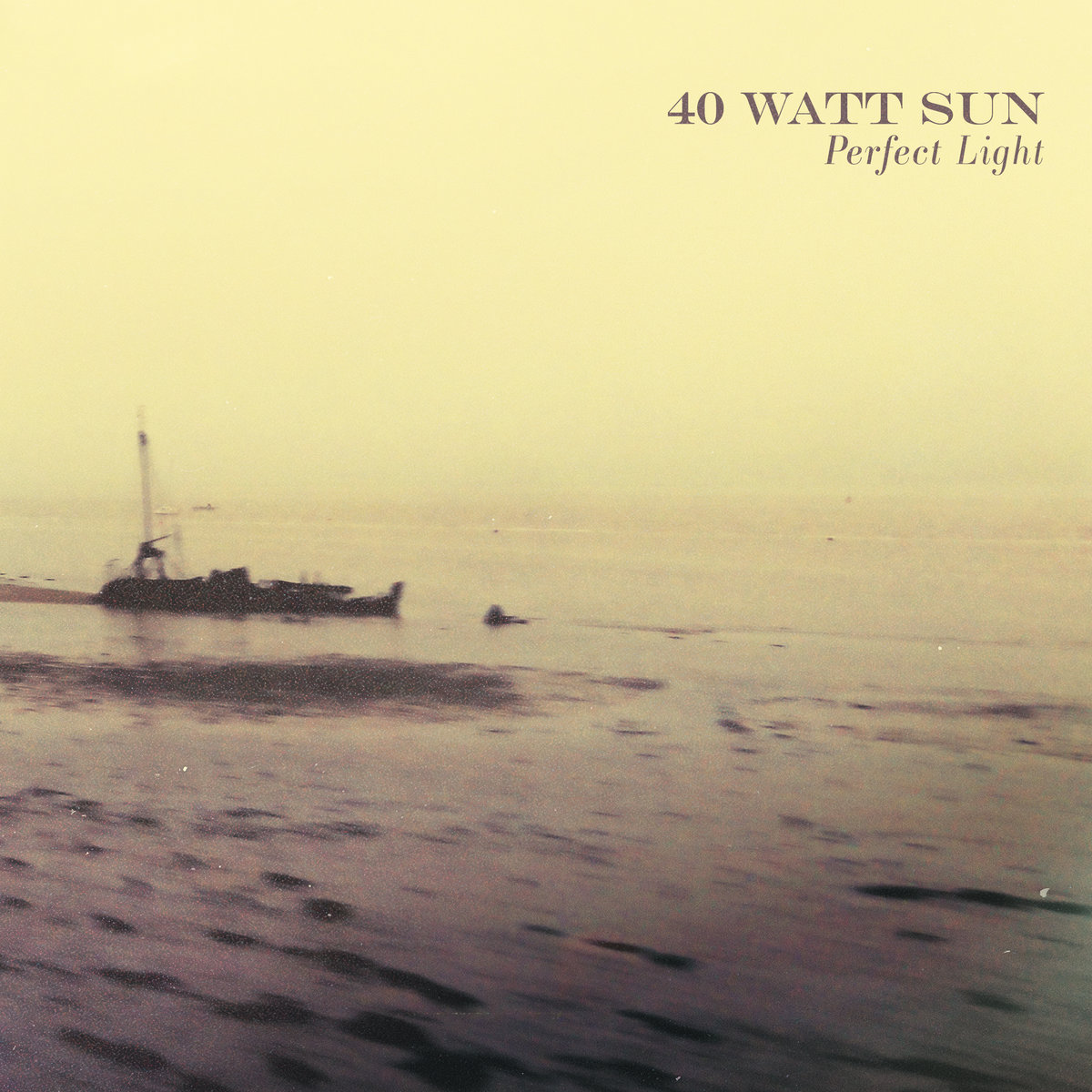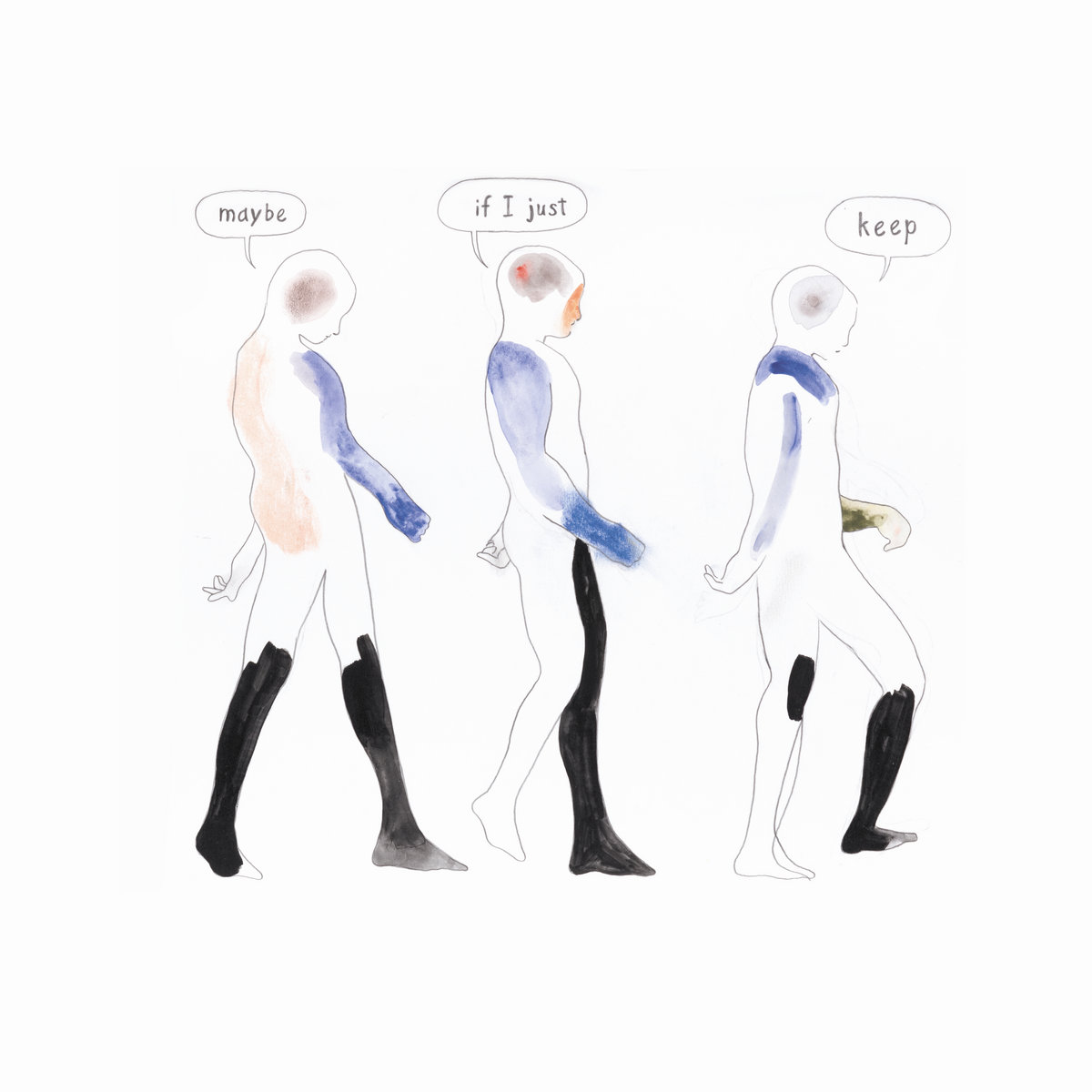Top Albums 2022 Part III 30 – 21
30. Kali Malone – Living Torch
More than just an
addendum to 2019’s The Sacrificial Code,
Living Torch sees Kali Malone
completely eschew her trademark instrument for bass clarinet, trombone, and a
huge array of electroacoustic instruments. The two tracks express a mindset of
composition that channels music concrete with a refreshing neoclassical
approach, something Kali Malone and her contemporaries of labels such as
Ideologic Organ, XKatedral and here Portraits GRM herald throughout their work.
Without the organ at the center, much like Malone’s first album, the
soundscapes created exist in interrupted timespace. These drawn out and
ever-evolving pieces feel decidedly different from what similar artist like Tim
Hecker or Ben Frost would achieve. Other than externalities dictating the course
and meaning of sound, Malone is a master of a singularly aural perspective,
stacking drones and buzzes of synths for the sheer experience of the body in
sound. Having had the opportunity to see her live in 2022, playing an organ
only set in a church in Montreal, reinforced this notion of musicianship even
further. This is music not meant to be cinematic as in enhancing any visuality,
leaving one of Malone’s aural spaces reconfigures the ability to hear as a
independent life-force.
29. Recondite – Taum
After a more abstract
and lightweight sound on Dwell,
Recondite doubles down on making hip-hop and trap beats in an acid drenched
mindset. Eschewing tropes of soundtrack music and any larger swells and builds,
Taum is a eleven track workhorse of
short tracks which reach their impact and intent in a minute tops. Standouts
like "Naif” could serves as hypnotic beats for a mixture MC between Ride
and Q-Tip to flow over. The viscerality of driving bass, ice cold synths and
heavy kicks mixed for a rapper would work well but shines in the utilization of
Recondite’s growing oeuvre. Beyond the focus on nature many of his records hold
and Daemmerlicht synergized with trap
beatmaking, Taum reconciles nature
and different environments not as backbone to percussive narratives, but as
inspirations only. You cannot only hear this, but find it reflected in the
track titled that speak of emotions and actions rather than places themselves.
Title track and closer “Taum” a conflation of the German words for dream and
daze (Traum und Taumel) is the only time the album takes a breather in form of
a left-turn from its hard-hitting drive. A kind of call back to Recondite’s
discography itself and quite literally a gentle reminder of reality and fiction
working hand in hand to draw out these magnificent beats.
28. Cucina Povera & Ben Vince – There I See Everything
This is the first
time an album by Cucina Povera caught my attention immediately and proved to
contain the emotional staying power I badly wanted to feel throughout her
previous work. This is most likely through the collaborative effort of Ben
Vince, who grounds the soundscapes and vocal performances in enveloping, cosmic
saxophone and reverberating mixture of electronic and acoustic instruments in
general. Rossi as Cucina Povera charms with her angelic voice, intonating
prayer like phrases in “Sumu Puistossa” or goes fully ethereal in “Pikku
Muurahaiskeko”. Fitting the cover image chose for the release, this album
conveys sleep/wake state, haunting meditations in the ambience of sound.
27. Jóhann Jóhannsson, Theatre of Voices, Paul Hillier, American Contemporary Music Ensemble – Drone Mass
This year saw
another post-humous release of Johannsson extensive library of collaborations
and commissions. Drone Mass
encompasses many of the greatest chops Johannsson carried throughout his solo
work and in his overall aesthetic. Theater of Voices shatter the airwaves with
their choral work, ranging from intonating syllables, call and response schemes
and hums ranging into shouts. The orchestra ensemble is offset by flourishes of
electronics and noise. The typical melodies and circular phrases of Johannsson's
music are complemented by the droning low-end of most tracks, either by cello
or electronic means and in the spirit of a “drone mass” the pieces convey
lament on a theatrical scale without narrating anything. Four years after
Johannssons untimely and conflicted passing, the scale of his output and
creativity continue to startle me. There was no one more capable of creating
neo-classical music that truly deserved this genre-specification, no one more
in command of the combinations of voice, orchestra, and electronic elements,
melding them into monuments of life and loss.
26. COLD GAWD –
God Get Me the Fuck Out of Here
Admittedly, I had
never thought about blackness in shoegaze music before encountering COLD GAWD.
A genre mostly devoid a discussion on race, the question of who is making these
fuzzed out sounds appeared as a glaring omission in my thinking. Being black
and making anything adjacent to rock music is often considered a non-starter, like
the perceived incompatibility of being a metal fan of color. Cold Gawd tackle
these notions not only in their spoken word interlude “Comfort Thug”,
references to skin and purpose of making music make their way into the lyrical
content as well. Between blown out guitars of the dreamscape of “Two Iris
Prints” Matt Wainwright poses the melancholic lines “Dark Skin / Present Youth
/ That’s All I Can Do”. Making music and trying to gain success play as much a
role as an ever-present vulnerability. The preposition of being alive dances
with a nihilism of having to make it because music is the only thing to escape
a meaningless life. While this may read like hip-hop at its core, this remains
true to the act of music making beyond genres and rings true in solemn fuzz of
COLD GAWD as well. With its place as a shoegaze album fronted and played by a black
artist, God Get Me The Fuck Out of Here
is a enveloping hell of finding your way out of your home town, transcending
expectations and doing this in the language you know. The glittered face of
Wainwright on the cover of the album plays with this theme of visual and aural
“white facing” in magnificent ways, and the heft and rumble of saturated
guitars paired with hushed and glassy vocals do work with a boastful preamble
of “fuck what you’re listening too, it’s Cold Gawd”.
25. Jamal Moss – Thanks 4 The Tracks U Lost
Widely recognized
as a major player in Chicago’s house music scene and even better known as
Hieroglyphic Being, Jamal Moss released his first album under his name in five
years. Apart from his awe-inspiring run of albums, EPs and other projects as
Hieroglyphic, under his own name, Moss crafts some of the most playful house
tunes in the whole genre. From the first beats of the hallowed-out kick drum on
“The Lust With-IN”, the album bursts with tunes and melodies that evoke slow
climb towards sun soaked atmospheres. Even tracks titled “rave bangers” retain
shifts of melodies and driving grooves at their core. Taking his knack for
experimentation as the ability to clash moods, repetition and varying tensions
of elements as Hieroglyphic Being, these tracks glisten with restless,
forward-facing energy. In clubs, each track would enhance the night, at varying
hours and different sets, as a headphone experience, the minutes flash by in
utter enjoyment.
24. Greet Death – New Low
This short ride
of only five songs distills everything that is great about Greet Death’s
approach to doomish folk and shoegaze. At times more acoustic and mellower than
2019’s New Hell, New Low doubles down on the existential dread of being alive. Every
first line of the five tracks gives of the vibe of a deja-vu, with the song
following a exploration of what has been nagging you about the everyday for a
long time. Only for the next track to go on repeat, an endless cycling through
of dread. New Low especially speaks
on the ennui of a working life – working for money, to cling to an existence as
a thing you are programmed to do. Dreams of a better life, panic attacks, love
and even the experiences of reaching this new low, the inevitability of it all
are sandwiched between having to work and being alive. This is the truest form
of pessimism, doing the things you hate and dreading the next tomorrow in full
knowledge that you have to get up and do it anyways. Maybe in the promise of
making these magnificent songs, or the bitter conclusions of “I’m Not Okay, I
Hate Everything”. For me, ending on the anthem that is “I Hate Everything” opens
the perspective of these observations and emotional affects. The wheel keeps on
turning and you hold on for days to come and the people you consider your loved
ones.
It’s all the same
We fear what we
can't change
We find our fix
Completely full
of shit
23. 40 Watt Sun – Perfect Light
Six years ago,
“Stages” as the first track of Wider Than
The Sky blew me away in its passionate delivery of defeat. The music of 40
Watt Sun was a singular example of how doom and emotional weight could
translate into acoustic music. There was no need for anything harsh to sound as
metal as Wider Than The Sky could. On
Perfect Light, Patrick Walker eschews
even the metal parts for an album full of love and gentle sentiments. His
signature writing style, full of wordy metaphors and twists and turns to reach
conclusions of despair have changed towards addressals of devotion and
explorations of love. “Reveal” catches you off guard in the well-intentioned
sentiments of loved as rays of light and reaching your love in their darkest
moments when its lines introduce the character of “Ophelia” and the conviction
of “I’m strong enough to lift you up”. Knowledge of myth aside, Walker as a
gentle bard burns up in the swells of this song to devastating heights, only to
deliver the conviction of his words. It is jarring when listened to the first
time and works as a great reminder why this is still 40 Watt Sun as a project
and not simply Patrick Walker. Over the course of the album, Walker goes
through different inflections of songs centering on love, companionship, and
friendship, all within his unique perspective of affection on the crossroads of
life, with sadness and grief as constant parameters of experience. Love as sound
in Perfect Light is never
starry-eyed, but convinced and realistic, something to behold, cherish and
remain aware of in its brevity.
22. Thou – Norco / Thou & Mizmor – Myopia
Focusing on the
portion of Thou’s contribution for the Norco
soundtrack, the band delivers an array of new tracks, leaning heavily towards
their best doom sounds and combining this with a few female fronted folkier cuts.
I can imagine a few bands as fitting for a soundtrack as Thou. Not for anything
that lends itself towards the cinematic or epic, but much rather for the
essence of atmospheric storytelling in their deepest riffs and shifting vocal
performances. Thou’s multi-movement tracks, ranging from utter destruction to
subtle interludes is narrative and forceful enough, pair that with ludic
elements and it’s a hit. While I completely missed the release of Myopia, a collaborative album with
Mizmor in April and only listened to the whole thing in November, the album
quickly rose in the ranks of what Thou as constant collaborators bring to the
table. Myopia funnels death and black
metal sentiments in the sludge of Thou’s style with harsher and faster
movements added (courtesy of Mizmor, I would wager). The vocals added by Mizmor
pair perfectly with the higher shrieks of Brian Funck, like how the body and
Thou would complement each other for a holistic sensation of disgust. Myopia is a perfect progression of what
Thou usually deliver with albums like Norco,
Heathen and Magus. Like their last collaboration with Emma Ruth Rundle, the
band reaches different heights in collaboration with similar artists working in
the void of blackness. With Mizmor, this may be their most cataclysmic setup
yet.
21. Felicia Atkinson – Image Language
Image Language recalls what is often described as the
unique perdurance of music in our hearing and processing of sound. Sound as
such is a unique event in time, short as waves and quickly changing, but
enduring in our understanding of melodies and its temporal structure. Felicia
Atkinson built her album as an aural house of discrete music and musings on the
nature of moving and existing in a place. Like this concept, the drones,
Atkinson’s voice and the usage of different instruments create a timespace of
their own that can be treaded by us a listener’s. The album plays with out
ability to make sense of discreet events as sounds and conglomerate these
experiences to a sufficient whole. In other terms, this is an intriguing
contemplation on sound and one’s own standpoint in time and sound while going
moving through space. I get the same vibe as something David Toop or Brian Eno
have created with their ambient music, but Image
Language has a drive like compositions by Mono in capturing your attention,
waiting for conclusions, twists, and cliff-hangers as flourishes of instruments
or remarks by Atkinson that become audible and processed for the first time
after listening to them several times as sounds alone.











Comments
Post a Comment